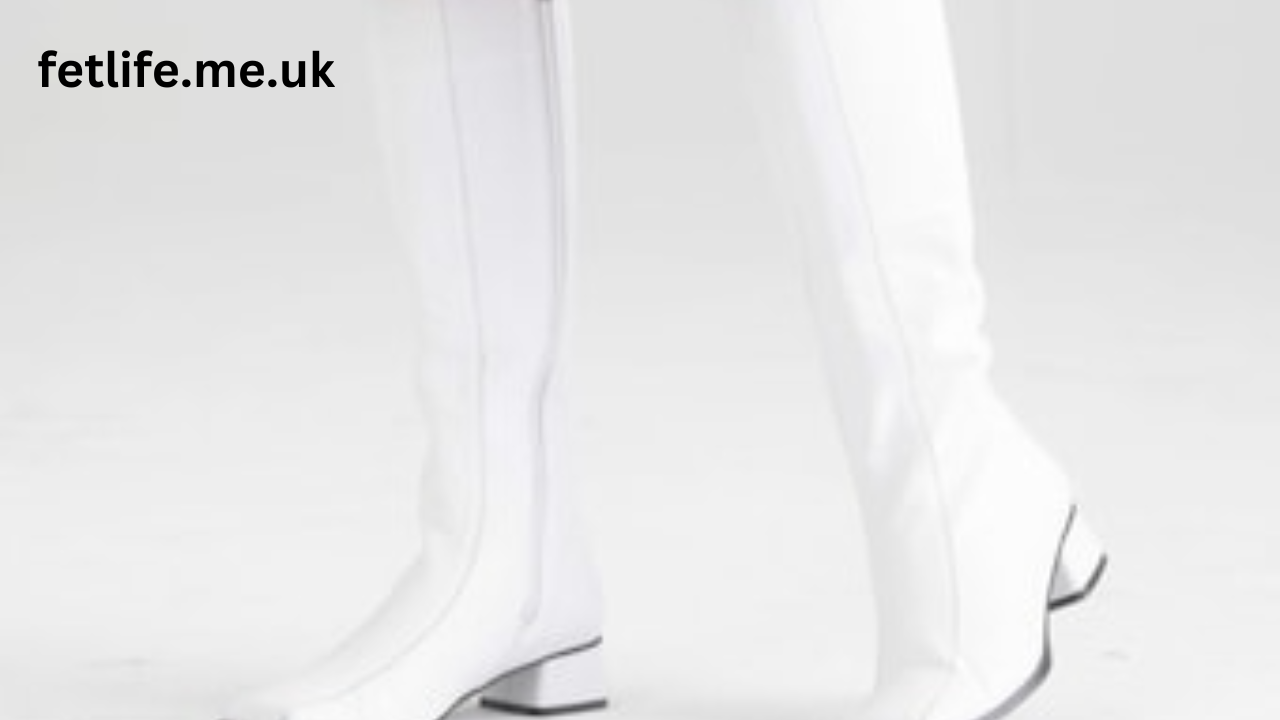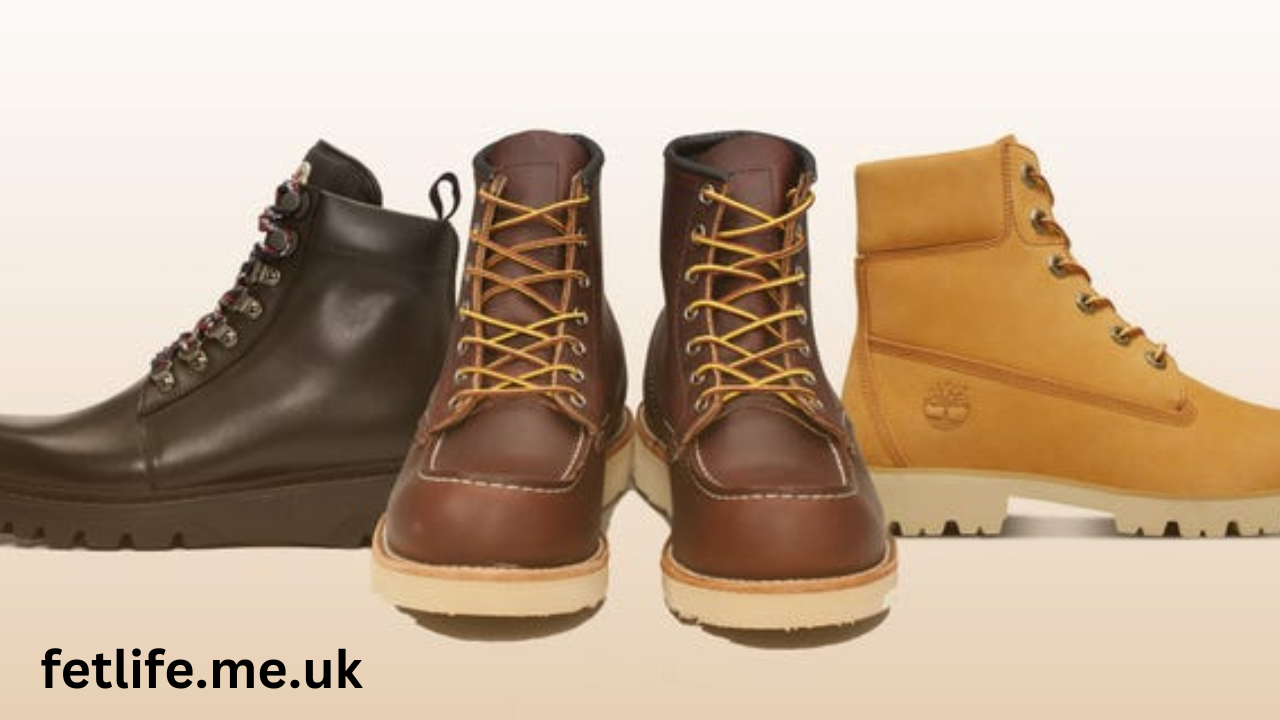Gogo boots are one of the most recognizable symbols of 1960s fashion, embodying the vibrant and revolutionary spirit of that transformative decade. From their bold design to their lasting influence on both mainstream and alternative fashion, go go boots remain a cultural touchstone. In this comprehensive exploration, we’ll delve into their origins, evolution, cultural significance, and modern-day relevance.
The Origins of Gogo Boots
The story of gogo boots begins in the mid-1960s, a time marked by sweeping social and cultural changes. The post-war generation was coming of age, challenging societal norms and embracing a more liberated and modern aesthetic. This was reflected in fashion, where traditional styles gave way to bold, youthful designs.
André Courrèges and the Space Age Influence
French fashion designer André Courrèges is widely credited with introducing the gogo boot to the world. Courrèges, a pioneer of the space-age fashion movement, debuted his version of the boot in his 1964 collection. The design featured a sleek, calf-high silhouette made of white leather or vinyl, with a low, block heel. Paired with his futuristic clothing designs, including the iconic mini skirt, the boots captured the imagination of the fashion world.
Courrèges’ gogo boots were revolutionary. They broke away from the stiletto heels and pointed toes of earlier decades, offering a modern, comfortable, and practical alternative. The minimalist aesthetic of these boots aligned perfectly with the mod culture that was sweeping through the UK and the United States.
The Name “Go go Boots”
The term “go go boots” is thought to have originated from the French word “à gogo,” meaning “abundance” or “galore.” It became associated with the high-energy dance culture of the time, particularly the rise of go-go dancers who wore these boots while performing. These dancers epitomized the spirit of the era, moving energetically to the rhythms of rock ‘n’ roll and Motown hits in discotheques and clubs.
Key Characteristics of Gogo Boots
Go go boots are defined by several distinctive features that set them apart from other footwear styles:
- Height: G ogo boots are typically mid-calf in height, though variations can extend to the ankle or reach the knee. This height adds to their striking visual appeal.
- Material: Early go go boots were often made of white leather or vinyl, materials that gave them a futuristic and shiny appearance. Over time, the range of materials expanded to include patent leather, suede, and even PVC.
- Heel: A hallmark of the gogo boot is its low to mid-height block heel. This design element prioritized comfort and stability, making the boots ideal for dancing and long wear.
- Toe Shape: Rounded toes were a defining feature of the original go go boots, providing a softer and more playful look compared to the pointed toes of earlier decades.
- Colors and Patterns: While white was the most iconic color, go go boots eventually became available in a rainbow of hues and bold patterns, reflecting the psychedelic trends of the late 1960s and early 1970s.
Previous article; Choosing the Best RFID Wallet Tips and Recommendations
Cultural Significance of Go go Boots
Gogo boots are more than just a fashion statement; they are a symbol of the cultural shifts and liberation movements of the 1960s. Their popularity and visibility in media, music, and dance cemented their place in the collective consciousness.
Association with Women’s Liberation
The 1960s saw the rise of the women’s liberation movement, which challenged traditional gender roles and advocated for equality. Go go boots, often paired with mini skirts, became a visual representation of this newfound freedom. They symbolized a break from the restrictive clothing of earlier decades, offering women a sense of empowerment and agency over their style.
A Dance Floor Revolution
The boots’ association with go-go dancers further solidified their place in popular culture. These performers, dressed in mini dresses and go go boots, became icons of the discotheque scene. Their energetic dance moves and eye-catching outfits brought the boots to a global audience.
Media and Entertainment
Go go boots gained widespread visibility through television and film. Shows like Shindig! and Hullabaloo, which featured musical performances and dancing, often showcased dancers wearing go go boots. The footwear also appeared in movies of the era, further embedding them in the zeitgeist.
The Evolution of Gogo Boots
While the 1960s marked the peak of go go boots’ popularity, their evolution didn’t stop there. The style has undergone numerous transformations, adapting to changing trends and maintaining its relevance in contemporary fashion.
1970s: Psychedelic and Platform Variations
In the 1970s, go go boots took on a more exaggerated and flamboyant style. The introduction of platform soles and taller shafts reflected the decade’s love for bold, theatrical designs. These variations found a place in disco culture, where over-the-top fashion was celebrated.
1980s: Retro Revival
The 1980s saw a revival of 1960s fashion, and go go boots made a comeback as part of this nostalgic wave. They were often styled with other retro-inspired pieces, such as polka dot dresses and mod accessories.
1990s and 2000s: Subculture Appeal
In the 1990s and early 2000s, go go boots became a staple of subcultures like goth, punk, and rave. Designers reimagined the boots with edgier details, such as buckles, spikes, and towering heels.
Modern-Day Interpretations
Today, gogo boots are celebrated as both a retro classic and a versatile fashion piece. Designers often incorporate modern materials, sustainable practices, and contemporary silhouettes while staying true to the spirit of the original design.
Styling Go go Boots
Go go boots remain a popular choice for anyone looking to make a bold fashion statement. Here are some tips for styling them:
- Retro-Inspired Looks: Pair white go go boots with a mini dress or a shift dress for an authentic 1960s vibe. Add colorful tights or a patterned scarf to complete the look.
- Modern Chic: Knee-high go go boots in neutral tones can be styled with skinny jeans and a leather jacket for a sleek, modern outfit.
- Festival Fashion: Metallic or brightly colored go go boots are a great choice for music festivals. Combine them with fringe tops, boho skirts, or sequined outfits for a fun, eclectic style.
- Costume and Cosplay: Go go boots are a staple in 1960s-themed costumes and cosplay. Whether you’re channeling a mod icon or a sci-fi character, these boots are the perfect finishing touch.
The Enduring Appeal of Gogo Boots
What makes go go boots so enduring? Their appeal lies in their ability to transcend trends while retaining their distinct identity. They evoke a sense of nostalgia for a transformative era in history while remaining adaptable to modern tastes.
A Symbol of Empowerment
Go go boots continue to symbolize confidence and individuality. Their bold design encourages wearers to stand out and embrace their unique style.
Versatility Across Generations
From the dance floors of the 1960s to today’s runways, go go boots have proven their versatility. They can be styled for casual, formal, or theatrical occasions, making them a timeless addition to any wardrobe.
Pop Culture Relevance
Go go boots frequently appear in music videos, fashion editorials, and on-screen productions. Their iconic status ensures they remain a go-to choice for evoking a retro aesthetic.
Conclusion
Gogo boots are more than just a fashion accessory; they are a cultural artifact that encapsulates the spirit of the 1960s and beyond. From their origins in the mod movement to their ongoing influence on contemporary style, these boots have carved out a unique place in fashion history. Whether worn for their nostalgic charm or modern versatility, go go boots are a testament to the power of bold design and the enduring appeal of self-expression.










